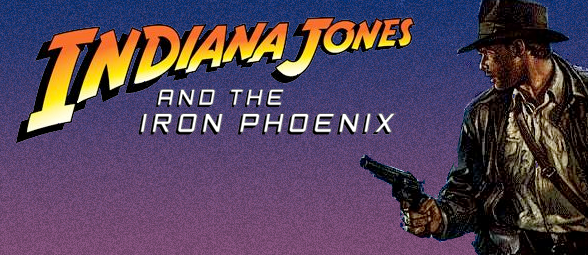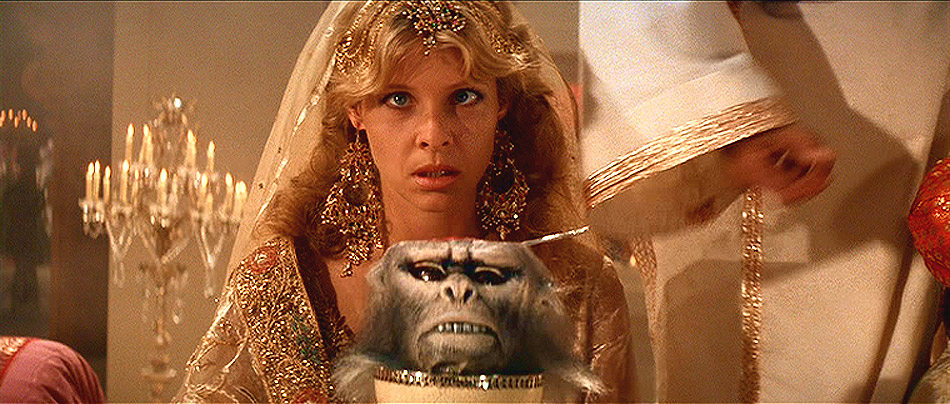- Page 1 After Fate of Atlantis
- Page 2 A Post-War Indy
- Page 3 Design Interrupted
- Page 4 Programmers and Palettes Stretched Thin
- Page 5 Blame Canada
- Page 6 "Our situation has not improved."
- Page 7 A Comic Consolation Prize
- Page 8 "It belongs in a museum!"
- Page 9 Resources, Sources, and Thanks
- Page 10 But wait! There's more.
Articles

Indiana Jones and the Iron Phoenix: The Lost Sequel to Fate of Atlantis "It belongs in a museum!"
Fate of Atlantis was internally referred to as “Indy 4,” and I think that nickname may have even made its way into the manual, and it certainly made its way to the fanbase. The inert Crystal Skull did little to change the minds of people who already saw the 1992 graphic adventure game as the proper fourth installment and follow-up to Last Crusade. While we didn’t get the opportunity to judge Iron Phoenix as a suitable “Indy 5,” we now likely know as much about it as we’re ever going to. It's enough to know we missed out on something promising.
Hal Barwood reflected on the game’s demise with a certain degree of self-rebuke, having had a hand in the game’s story. “We should have known,” he said, regarding the Germany sales issue, adding that "had we thought harder about the story beforehand, I think we would have realized it was insensitive, so its loss has given me no regrets."

I’m less convinced than Hal that an examination of conscience is called for. The pulpy revenge fantasy of righting one of history’s biggest missed comeuppances is a demonstrably welcome one. Resurrecting Hitler only to give him the theatrical death he deserved was in a sense one of Iron Phoenix’s most attractive features, and Quentin Tarantino’s Inglourious Basterds would go on to make beaucoup bucks off a similar one fifteen years later.

For an outsider like me, the loss of Iron Phoenix hurts, because it’s a casualty from an era where the studio’s adventure games, though getting sparser, were all winners. Indy would of course still have a future in the interactive space, with Hal Barwood himself returning to helm Infernal Machine (and which also, perhaps coincidentally, took place in 1947). By that time, adventure games were out and Tomb Raider was in, and the project was approached as an action/adventure accordingly. And it’s a good game, to be sure, but also one made while the 3D technology was immature, whereas Iron Phoenix was being made at a time when the company had mastered the graphic adventure genre so undeniably, Blizzard Entertainment was intimidated out of competing.
Aric Wilmunder stayed with LucasArts until April 2000, when he departed at the same time as then-president Jack Sorenson. In a way, he’s retained his role as The SCUMM Lord, only instead of actively enhancing the engine he’s serving as something of a custodian. To the delight of curious fans, he’s recently begun sharing design documents for both published and cancelled SCUMM projects through his web site (that includes graciously scanning the lengthy Iron Phoenix design among other valuable project artifacts that served as major touchstones for this article), and he’s even looking into getting the SCUMM source code archived.
Anson Jew left LucasArts in 1999 but continues a freelance career, providing concept art for games, television and even blockbuster feature films, and you ought check out his blog at agoynamedjew.blogspot.com. It's clear he’s never forgotten that his roots trace back to story-driven games; he can occasionally be found contributing to projects headed up by fellow LucasArts vets – note his credits on such games as A Vampyre Story and Insecticide. Bill Stoneham also remains active as an artist, and maintains an online presence at www.stonehamstudios.com. Joe Pinney re-emerged as a writer/designer for Telltale Games.
Barring a resurrection courtesy of the Philospher’s Stone itself, Iron Phoenix is dead and gone, but I felt it was time it received a proper funeral in the form of this retrospective. With its excavated design document giving fans an opportunity to at least form a picture of what they missed out on, it need not be forgotten as well as lost. And who knows? With a fifth Indiana Jones movie on the horizon and graphic adventures back in vogue to a certain extent, perhaps we still haven’t seen the last story-driven adventure game starring everyone’s favorite archaeologist. Until then, we'll just have to treasure what we have, and the fragments of what we almost had.